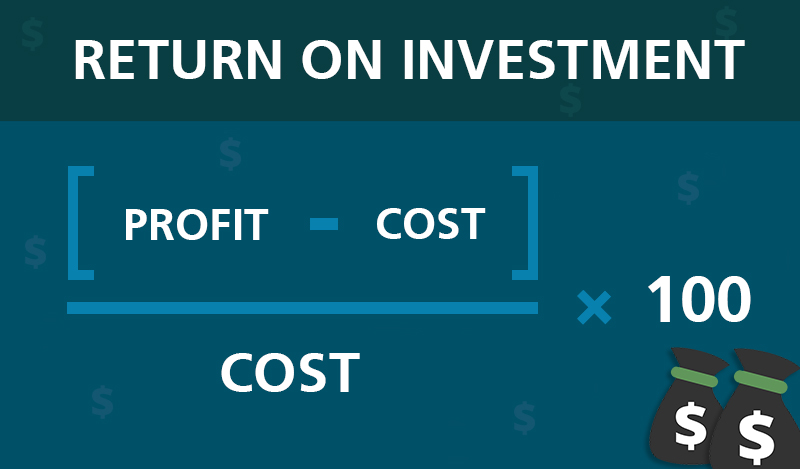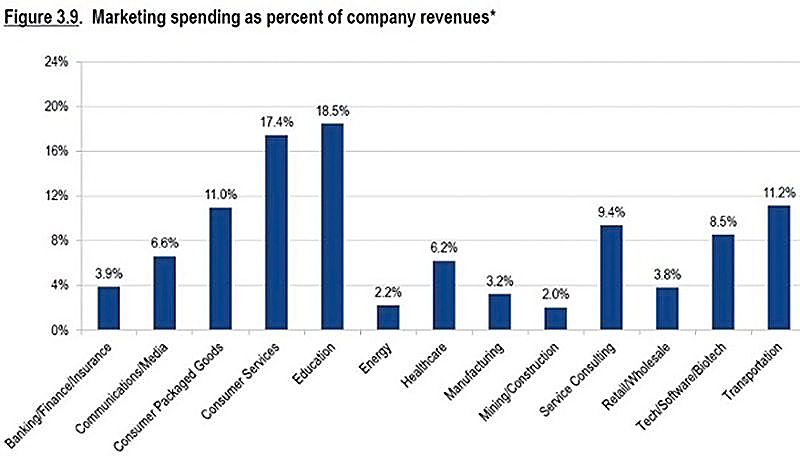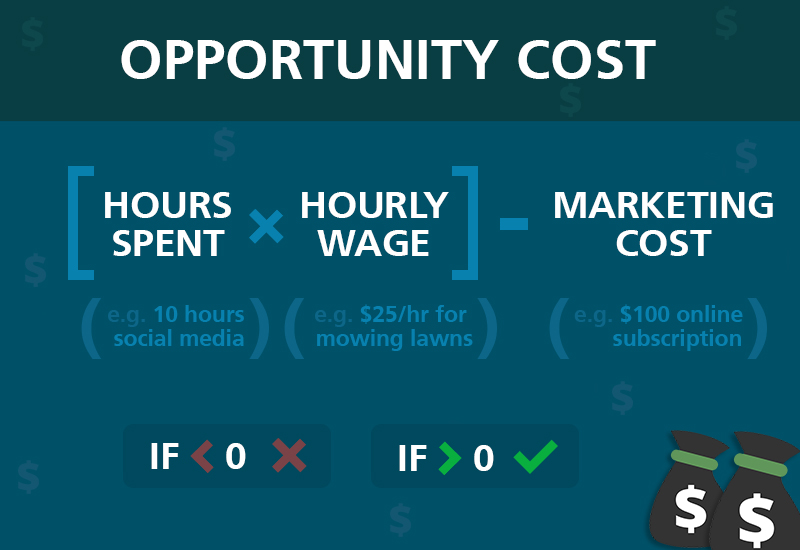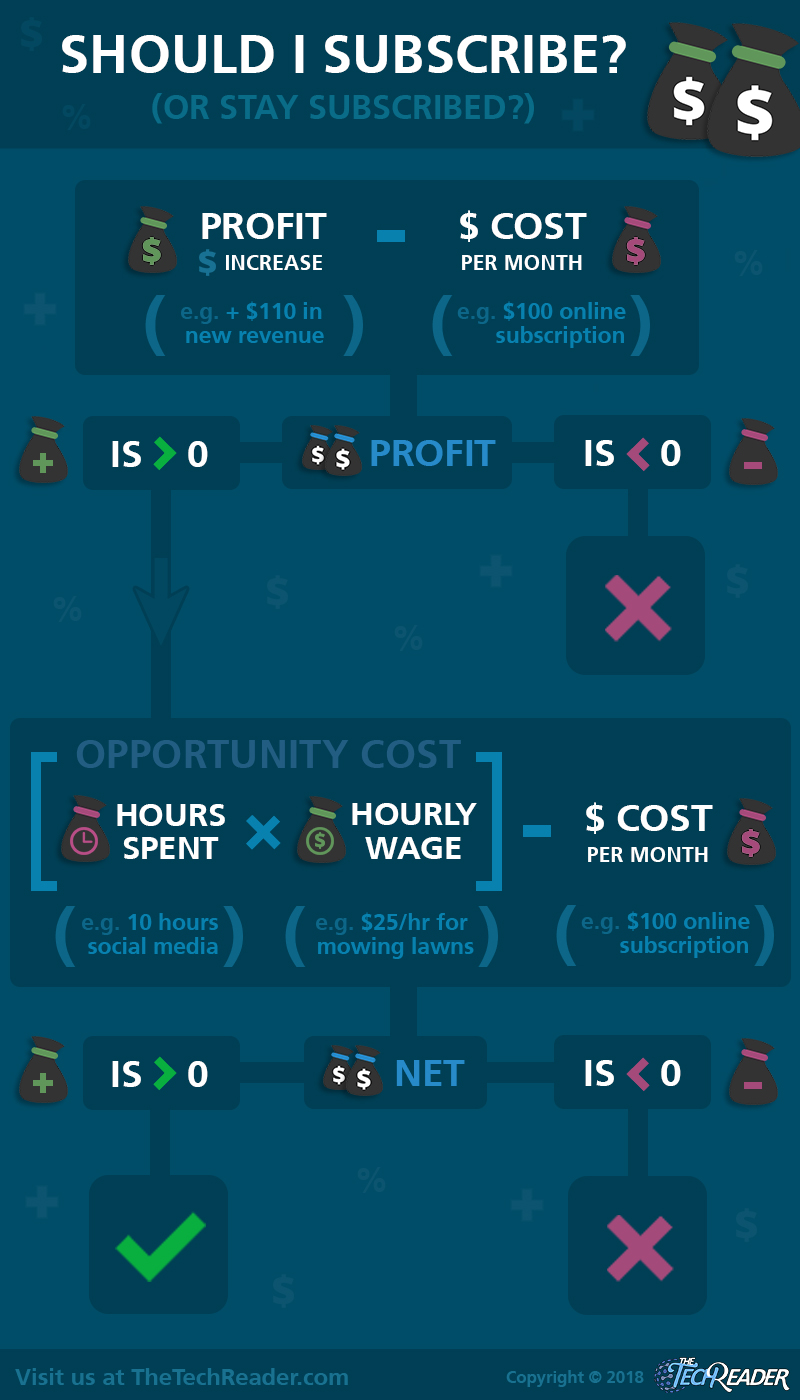
Just a couple of decades ago, there were just a few online services that anyone could want. Today, the internet is proliferated with services on every single possible thing you can think of – and many that you would have never thought of. Some fail due to a poor sales strategy, but others succeed even though their actual product is useless or inferior.
These services, which include PPC, Web Design, SEO, Web Hosting, CRM, Social Media, and so many others, can cost anywhere from $1 per month to over $1,000 per month. Some greedy companies, including notoriously SEO companies, even charge thousands or even tens of thousands of dollars per month. Whether they actually sell any of these subscriptions is entirely another story; usually, when a large company gets swindled into them they do not stay when ROI is nil – unless their company is very poorly run and they haven’t done an accurate cost-benefit analysis. I knew a bank once who got swindled into a $2,500 per month social media service, only to quickly cancel it (and get their money back) when it gave them zero return on investment.
Everyone wants to make money with their website
Whether you are a service company, or you have a physical product, or if you are simply a blogger, you are in business to make money one way or another. Sure, there is some thrill in the freedom to outlet your creative expression through your product, service, or blog articles; but surely every person running a website and investing time and energy into it wants more than a quick dopamine hit when 1 user shares their post or product on twitter. Surely, every person with a website wants to make money.

After all, you already invested money into web hosting, web design, product development (for products), customer service (if you are selling something), writers (if you are a blogger and not the only writer), and even marketing and advertising. Why spend this money and not get anything in return? And why spend the time to provide a service, articles, or products to your customers if you are not going to be making money doing it? Your goal is to provide value to people, but you are not exactly a charity. And even if you are an actual charity, you still need to make money to operate, and to reach the most people to help.
Many bloggers often neglect to even set a marketing budget; and this is a major reason why most blogs fail. Conversely, while other bloggers and website owners may spend money for various services, they often have not actually calculated the value of the services they are subscribed to; and unless they are in accounting or economics (or have a staff), likely haven’t run the necessary cost-benefit analysis required to see if the value provided by the service is really worth the expenditure. Or, they have not analyzed potential services to see if they really should be subscribing to that service because in the long run, the money spent on the service or subscription would be less than the total return gained by the service, resulting in a net profit despite the additional cost.
Budget your subscriptions as a marketing expense
In order to determine how much money should be spent on online services and subscriptions for your website or company, first you need to determine your marketing budget, and then you need to determine which percent of your marketing budget is effective to spend on online services and subscriptions, since these online services are actually part of your marketing budget. In some cases such as a CRM you may be pulling from your customer service budget, and there are other cases as well; but for the purpose of this article, we will focus on your online subscriptions as being a sales and marketing expense. If you are using a service for another purpose, like customer service or time management, then simply change “percentage of marketing budget” to “percentage of your customer service budget” or whichever budget you are pulling from.
The point here is to recognize that online services and subscriptions are not a sole expense isolated by themselves on their own digital planet; but rather that these subscriptions need to be treated as an expense which can be grouped and categorized as an essential business function. Then you need to be doing a cost-benefit analysis and determine your ROI (“Return On Investment”) in order to determine if it is profitable to use the service or not. This way, you can effectively determine if you are spending too much – or even not enough – on your online subscriptions.

Depending on your level of business knowledge, this may sound a bit complex and I used a couple of business terms; but I assure you, any person can do this, and should do this, if you are running a business or in a management position in yours or someone else’s business. This counts if you are a CEO, executive, manager, sales person, if you work in the marketing department, or if you are simply a blogger or run your own website from home. If you are not doing this, then you are losing money (or losing your company money), one way or another.
Let’s start with determining how much you should spend on your marketing budget. If you have no marketing budget, then you are not a business. If you are not a business, then you cannot expect to make any money. If you do not expect to make any money, then why are you doing what you are doing? Even if you only want to influence people, you should still want to make money, because in making money and marketing yourself, you can influence far more people. Ok, now that we determined you do want to make money, and therefore want to be a business, and therefore need a marketing budget, now we can start thinking about just how much money you really should spend on your marketing budget.
How much should you spend on a marketing budget?
To determine your marketing budget, you have to start with your current or projected profits. If you have no profits, then you should first and foremost set a profit projection for how much you want to earn. In this case, you will be pulling your marketing budget out of your own pocket (presumably from your day job or your personal savings, if you are running a blog for example). If you do not spend any money on marketing, you could wait years hoping to be ranked in google or whatever and possibly see no return on your time and energy invested.

Image/Data Source: How Much Should You Budget For Marketing In 2018
On average in 2017, companies spent between 9% and 14% of their total budget on marketing, with an 11.4% average. Historically, companies would spend between 4% to 10% since the early 2000s. Therefore, it would be reasonable to expect to spend somewhere around 10% on your marketing budget, if you are a fan of clean, rounded numbers.
As far as percent of total revenue, companies spent between 2.2% (for energy companies) and 18.5% (for education) of their total revenue on marketing. This makes sense considering energy companies charge way more than the energy is worth, and they also have to spend less on marketing due to energy being a consumer demand. Education on the other hand, spent far too much on marketing, probably due to inefficiencies relating to government involvement in education. Traditional companies spent somewhere in the middle, between 6.6% for communications and media, and 11% for consumer packaged goods. Therefore it is also reasonable to consider spending somewhere around 7% to 11% of your total business revenue on marketing.
Certainly, you aren’t going to reach any profit or sales goals with a zero marketing budget. Even guerrilla marketing strategies require the spending of at least some money – even if this is not actually dollars, but the cost of time; and time costs money by way of opportunity cost. That is, opportunity cost is that amount of money sacrificed that could have been earned, say, at a job instead of spend in time doing “free” marketing. In that case, opportunity cost is still an expense, even if it does not come directly out of your wallet.
Time is money due to opportunity cost
In other words, even if you are using guerilla marketing, the time you spend is actually an expense and can be calculated the same as actual money. For example, say it takes you 10 hours per week (or even month) to implement a guerrilla marketing strategy that does not cost any actual dollars and cents. You need to do a cost-run analysis to determine if your expense is more effectively spent doing that strategy, or spending actual money on a different strategy. Take this example: say that on the side you mow lawns. Say that each lawn takes 1 hour, and you earn $25. Now, say that you also run a blog. In this blog you spend 10 hours per month posting on Facebook and Twitter. It costs you nothing in dollars to post on Facebook and Twitter. However, if you spent that same 10 hours mowing more lawns, then you would have actually earned $250.

Therefore, in this case, you are actually spending $250 posting on Facebook and Twitter each month. You didn’t realize it, but now you can see the truth. Is this an effective use of your marketing budget? Or, is there possibly a service that you can actually spend $100 per month on that does 10 hours of posting to Facebook and Twitter for you, and instead of you posting, instead you spend 10 hours mowing lawns while your service posts on social media for you. They may even do a better job than you at posting. In this case, you now have $150 extra to spend, after earning $250 from mowing lawns, and spending $100 on the service. Therefore, in this case, it costs you an additional $150 to post on twitter yourself than it would be to spend that 10 hours at work and subscribing to a service. The net result is that the obvious choice would be to hire the service in this case than to post yourself.
Of course, this is simply an example and I simply threw out some semi-random numbers. But this is a clear example of how to analyze your marketing strategy in order to determine a more effective spending of your marketing budget. I also didn’t include the net profit in the above example, but that also needs to be calculated to determine if your time or the service is even worth it in the first place. If not, maybe it is time to change your marketing strategy.
Subscription services you don’t need or can’t use
Let’s take another example. Say that you are running a blog. You just started out, and are making nothing from your blog. Your profit therefore is zero, and your net profit is negative after the opportunity costs and the cost of web hosting, etc. Should you sign up for a $100 per month service, say, doing keyword research, especially when you don’t know the first thing about keyword research? Certainly not.
If you insist on this marketing strategy, your money would be better spend on training programs on how to do keyword research first, rather than paying high prices for a service you don’t know how to use effectively – especially when you are making no money and the money is coming out of your pocket. Conversely, your money may be better spent elsewhere entirely.
Calculate the net return on investment to see if it is worth it

But then take another example. Say your site sells a product and is 1 year old, and your net sales per month is $5,000. Say that you have a small team of staff who manage your website and SEO. You need to sit down with your team and calculate the total profit gained from optimizing your website keywords. If your profit can increase by more than $100 by utilizing a keyword research program which costs $100 per month, and there are no cheaper alternatives that can perform the same or similar functions, then you can subscribe to that service. Then revisit your sales and profits every month for at least 1 year to see if your net profit has increased.
If after 3 months your increase in net profit is zero, then you are wasting your money. But if you are making maybe $90 per month extra after 3 months, and it is showing a steady increase in profit (say, $30 on month 1, $60 on month 2, and $90 on month 3), then even though you aren’t making your money back yet, it is projected to start showing a return very soon. In this case, you can keep the service, but continue to monitor it to see if your net profit is increasing. But if it really isn’t profiting anything after a few more months, it may be time to cancel that subscription and try a different marketing strategy.
Calculate your subscriptions like a marketing expense

Of course, it is best to run every website like a real business, even if you are just running a blog. Everyone would benefit from earning additional money through their website, so what you need to do is determine if your existing services are really worth what you are paying each month, or if perhaps there are services you could use that could save you time and increase your net profits from your website.
While this may seem like common sense, the truth is that many people overlook this important issue, and simply subscribe to a service if they are sold on the product’s benefit in the sales page or the referring blog. For small subscriptions less than $10 per month, this may be fine since the cost is low enough to be pocket change (unless you have a lot of small subscriptions which add up). But for larger subscriptions such as $50, $100 per month, or more, you really need to consider this as an actual marketing expense, and calculate if the return on your monetary investment is higher than the amount you are paying. If it doesn’t earn you more than you are paying, then it may be time to cancel.
Some subscriptions may provide more value via opportunity cost

In some cases, this may mean that you are also calculating your energy lost, in which case, indirectly, it is helping you to make money. For example, business owners have a lot on their mind. A particular service that handles required tasks may benefit this business owner (website owner) a greater amount than the actual money spent.
For example, hiring a virtual assistant clearly does not have a direct monetary return. But the benefit gained to the manager, executive, or entrepreneur could indirectly result in thousands or even millions of dollars in additional profit per month, because without having to spend the extra time and energy doing menial tasks, the business owner can instead spend that time and energy on profit-generating activities – like sales, instead of fixing their wordpress site, for example.
Now, things might get a lot more complicated when adding in the cost of time and energy, so it may be best first to focus on the monetary return on investment. After you have that down, then you can also include time and energy cost (which is an opportunity cost) in your cost-benefit analysis. Take it one step at a time. In the end, your business will run more effectively, you will make more money from your website, and ultimately you will be able to help more people.
Should I Subscribe Or Stay Subscribed? Infographic
In this infographic, I give you the formula to determine if you should pay for an online subscription for your website or not. First, calculate the net profit. If there is no profit, then don’t subscribe or stay subscribed. If there is a profit, then calculate the opportunity cost by calculating your time if it was spent earning money at your work or even a standard job instead of doing that activity. For example, mowing a lawn at $25 per hour and hiring someone instead of posting yourself. Hope it helps!




